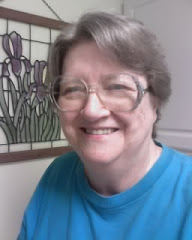#1 ~ Do I feel a vocation to be fully human? (pp. 60-65)
#2 ~ What is my faith in the future? (pp. 66-73)
#3 ~ What do I believe about others? (pp. 74-81)
#4 ~ What am I willing to notice in my world? (pp. 82-89)
#5 ~ When have I experienced good listening? (pp. 90-97)
#6 ~ Am I willing to reclaim time to think? (pp. 98-105)
#7 ~ What is the relationship I want with the earth? (pp. 106-115)
#8 ~ What is my unique contribution to the whole? (pp. 116-125)
#9 ~ When have I experienced working for the common good? (pp. 126-133)
#10 ~ When do I experience sacred? (pp. 134-141)
#11 ~ What is our role in creating change? (pp. 142-149)
#12 ~ Can I be fearless? (pp. 150-159)
Tuesday, July 30, 2013
Part Three: Conversations Starters
The twelve conversation starters in Meg Wheatley's Turning to One Another don't have to be in any particular order. Feel free to jump around among them as you think of something you want to add to our conversations here on Book Buddies. I'll make live links of all twelve questions.
Part Two: A Place to Pause and Reflect
This section was a surprise! It consists of exactly six short quotes, illustrated by gray and white versions of the people on the cover. Hmm, I wonder if I could actually find them in this picture. Yes. the first sentence uses the two fellows with the dog, though it's been flipped. The people to the dog's right illustrate the second sentence, and it has also been flipped.
1. Conversation is the natural way we humans think together. (pp. 46-47)The third quotation has the man at the far bottom left on my book cover, though only the tip of his head shows up in this wide picture. The fourth illustration is from the center of this picture (and in the center of the front cover). It shows the man holding the baby and talking to a woman.
2. We can't be creative if we refuse to be confused. (pp. 48-49)
3. It's not differences that divide us. It's our judgments about each other that do. (pp. 50-51)The woman on the page with the fifth quote is not on the cover of my book, but in the illustration above, she's standing alone near the three people on the bottom right. It looks like she is holding two or three books. The guy wearing all blue (in the middle, above and on the book) is my favorite, simply because he's standing there reading a book. The mother and child illustration for the sixth quote is to the left of the blue man reading his book.
4. There is no power for change greater than a community discovering what it cares about. (pp. 52-53)
5. Am I becoming someone I respect? (p. 54)Is this one way to "pause and reflect"? Maybe my little exercise in matching the gray-toned people inside the book with their colorful personas on the cover is a reminder of what we learned in Part One:
6. Reality doesn't change itself. We need to act. (p. 55)
- "What do you see?" (p. 7)
- "We try to stay curious about each other." (p. 33)
- "Listen well." (p. 7)
- "And, as we slow down the conversation to a pace that encourages thinking, we become wise and courageous actors in our world" (p. 13)
- "I have witnessed the astonishing power of good listening." (p. 12)
- "We can change the world if we start listening to one another again." (p. 15)
Part One: Turning to One Another
Question: What spoke to you in this first part of the book?
Quote (p. 3)
Quote (p. 3)
I wish we had peace, no violence and lots of moments of silence.
I wish we had no more drugs and have lots of kisses and hugs.
We should have more friends so the world would never end.
We should show more love and pretend that we are doves.
Yes, peace in the world.
— Beta Rae Soriano, age 10
Saturday, July 27, 2013
Turning to One Another ~ by Margaret J. Wheatley
Turning to One Another: Simple Conversations to Restore Hope to the Future ~ by Margaret J. Wheatley, 2009
Author's home page
Book's web page
Table of Contents
How to start a conversation
DISCUSSION
Part One: Turning to One Another
Part Two: A Place to Pause and Reflect
Part Three: Conversations Starters
"I believe we can change the world if we start talking to one another again." With this simple declaration, Margaret Wheatley proposes that people band together with their colleagues and friends to create the solutions for real social change, both locally and globally, that are so badly needed. Such change will not come from governments or corporations, she argues, but from the ageless process of thinking together in conversation. Turning to One Another encourages this process.INFORMATION
Part One explores the power of conversation and the conditions that support it — simplicity, courage, listening, and diversity.
Meg Wheatley
Part Two contains quotes and images to encourage the reader to pause and reflect, and to prepare for the work ahead, which is starting conversations.
Part Three provides twelve conversation starters — questions that in Wheatley's experience have led people to share their deepest beliefs, fears, and hopes.
Author's home page
Book's web page
Table of Contents
How to start a conversation
DISCUSSION
Part One: Turning to One Another
Part Two: A Place to Pause and Reflect
Part Three: Conversations Starters
#1 ~ Do I feel a vocation to be fully human? (pp. 60-65)
#2 ~ What is my faith in the future? (pp. 66-73)
#3 ~ What do I believe about others? (pp. 74-81)
#4 ~ What am I willing to notice in my world? (pp. 82-89)
#5 ~ When have I experienced good listening? (pp. 90-97)
#6 ~ Am I willing to reclaim time to think? (pp. 98-105)
#7 ~ What is the relationship I want with the earth? (pp. 106-115)
#8 ~ What is my unique contribution to the whole? (pp. 116-125)
#9 ~ When have I experienced working for the common good? (pp. 126-133)
#10 ~ When do I experience sacred? (pp. 134-141)
#11 ~ What is our role in creating change? (pp. 142-149)
#12 ~ Can I be fearless? (pp. 150-159)
Subscribe to:
Posts (Atom)







